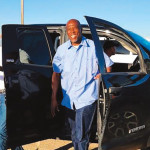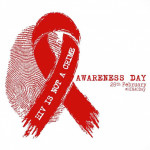 |
Do we really need a revival of the people living with HIV (PLHIV) self-empowerment movement that arose in the 1980s and early ’90s?
According to a recent national survey, the answer is yes. The Sero Project conducted the survey because, according to director Sean Strub, “we wanted to understand better how many local and state PLHIV networks exist and what they mean to those who participate in them.” The Positive Women’s Network-USA, Global Network of People Living with HIV/North America, the North American affiliate of the International Community of Women with HIV and the U.S. PLHIV Caucus co-sponsored and helped promote the survey.
Sero’s research identified 71 PLHIV-led independent groups scattered across 27 states; seven are chapters of national groups. These networks mobilize essential advocacy by bringing PLHIV together to enable PLHIV to select leadership of their own choosing, define their own agenda, establish priorities and speak with a collective voice. Beyond that, research has demonstrated that networks and similar social and advocacy support structures also reduce HIV-related stigma and improve quality of life and health outcomes for PLHIV.
Sero’s Network Empowerment Project (NEP) is designed to support the creation and strengthening of local and state PLHIV networks by offering resources, communications platforms, skills-sharing and technical assistance.
Carrie Foote is a professor at Indiana University who has been living with HIV for more than 25 years. Assisted by her student intern, Tamarah Kilroy, Carrie led the survey design and administration process. “We got over 200 responses but narrowed our analysis down to groups where the leadership and membership is mostly (75 percent or more) PLHIV. Emotional support and recreational groups are important, but we only looked specifically at the groups engaged in advocacy that are led by PLHIV. It was great to hear what they are doing and what they need to move forward.”
Although California and New York topped the list in numbers of groups, the next three states were Pennsylvania, Florida and South Carolina, and included networks in smaller communities and even rural areas. Most (69 percent) agree that internalized stigma is the first challenge they have to address. A respondent in Illinois said, “It’s the stigma that’s keeping people from accessing testing and care. That’s what’s killing people now a days, not HIV/AIDS. It’s the stigma that surrounds it.” The leader of a women’s PLHIV group in Arizona said she encourages women “to disclose to at least family because that takes that weight off of us.” Isolation and fear of disclosing one’s status to anyone is common in her group’s membership.
A network leader in Mississippi reported fatalism among men who have sex with men (MSM), especially young men of color, as a powerful manifestation of internalized stigma. “The ’oh I’m going to get it no matter what’ [attitude] is really a sort of self-stigma, where you feel like maybe at some level you deserve it, or it’s just part of the deal for who you are.”
Because internalized stigma is the cornerstone on which all other stigma is built, addressing it is critical. One respondent described PLHIV networks as “a safe place, especially for those people that are just maybe newly diagnosed, or just engaging in care for the first time to have that peer support.” When networks serve as safe spaces, where members confront and recover from self-stigma, they also become crucibles from which the strength and determination to challenge external stigma emerges.
There were some surprising responses. One survey respondent reported that his Ryan White Consumer Advisory Board (CAB), an advisory body Ryan White grantees are required to establish, prohibits its members from disclosing their participation to anyone, ostensibly to protect members’ confidentiality. As a result, the CAB is “populated by terrified persons, disempowered, and being led by well-meaning but uninformed HIV-negative social workers. The result is an encouragement of secrecy and extension of stigma. Local ASOs [AIDS service organizations] also deal with a significant number of issues of lacking involvement and empowerment of PLHIVs.”
Such secrecy is not characteristic of most CABs, many of which serve valuable advisory and PLHIV advocacy functions. One CAB in Illinois developed a palm card that is supplied to all HIV case managers and their clients. It outlines what Ryan White services and case management services are mandated by law, thus ensuring that expectations are clear on both sides.
Over 80 percent of the PLHIV networks Sero surveyed are active in pubic education efforts, such as HIV/AIDS awareness days, and advocate for the needs of PLHIV in meetings with policy and service leaders and at conferences. Over two-thirds recruit and train new members to become advocates and raise awareness through the media. Most also actively confront stigma in community settings, health care settings and where it is enshrined in public health policies. Respondents indicated the two biggest barriers to their work are limited funding (cited by 82 percent) and the unwillingness of many people in their area to self-identify as living with HIV (cited by 55 percent).
Most respondents are interested in understanding how Sero’s Network Empowerment Project can help them grow and become more effective. They complained of HIV/AIDS service providers who “give lip service” to PLHIV empowerment without integrating it into the services they provide.
Only 27 percent said that the voices of PLHIV are adequately recognized and heard most of the time by the HIV-related organizations and leadership in their area.
Even though most networks are managing on a shoe-string financially, 59 percent find some way of making materials available to their members. Most hold meetings at least monthly. One group in Oregon can’t afford to rent a bus to take people to the state capitol to lobby. Instead, they regularly crowd as many members as possible into the few accessible cars to make the trip. Their work with the Oregon insurance commissioner in 2014 prevented insurance companies from being able to escalate the price of HIV medications, as has occurred in some other states with the advent of the ACA.
Groups also describe their needs for technical assistance. One said they needed “major help addressing mental health and the criminalization of HIV in South Carolina.” Still others need support in wrestling with bureaucratic designations (such as being labeled a “low incidence” area) that limit access to services. An Arizona respondent reported no HIV testing outreach is targeted to women in their area and testing is urgently needed by the “African-American, Latina (including those who are undocumented) and Native American communities; We are dependent on clinics to assist us in reaching their women patients, or word of mouth by our existing clients. With the stigma internal to our clients, there is little discussion among them with regards to recruiting new clients.”
These survey results strengthened Sero’s conviction that the most effective way to combat stigma is by empowering the stigmatized. The Denver Principles recommends that PLHIV, “Form caucuses to choose their own representatives, to deal with the media, to choose their own agenda and to plan their own strategies.” At a time when HIV is generally either ignored or criminalized, this directive is more important than ever, not less.
Findings from the survey will shape the next stage of the Network Empowerment Project, which is to support efforts for launching and sustaining effective networks of PLHIV and facilitate the engagement of local networks with the national U.S. Caucus of PLHIV Organizations.







1 Comment
1 Comment